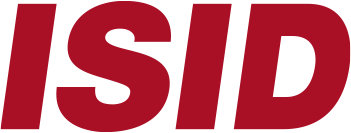What is a PACS?
A Picture Archiving and Communication System (PACS) is a medical imaging technology which provides storage and access to images from multiple sources, like medical imaging devices (X-Ray, CAT, MRI, Ultrasound, etc.). This avoids the need to manually retrieve, or transport physical images or digital files in storage devices. The universal format for PACS image storage and transfer is DICOM (Digital Imaging and Communications in Medicine). A PACS also allows incroporating other file formats, like PDF or others.
Some Frequent Questions about PACS:
- How does a PACS work? Usually Picture Archiving and Communication Systems is a fairly complex software that is installed on-premise or in the cloud and, at its core, is a picture management solution, but tailored to medical needs.
- What types of file are allowed in a PACS? Normally a PACS uses mostly files in the DICOM format. This is a standard format. However, most PACS can also deal with different imaging or general purpose formats (like PDF, for example).
- What is a PACS used for? There are several uses for these software systems: as hard copy replacement, so only digital files are used. or for remote access, so doctors can see full quality images from anywhere in the world.
- Does a PACS backup the images? Yes. All of these systems have an archival function (the “A” in the acronym) so files are saved and get a regular backup to guarantee their integrity and retrievability at any point.
- Does a PACS comply with national regulations? Yes. Due to the sensible nature of medical images, all PACS software has to comply with national and/or international regulations regarding privacy and anonymity.
Our image analytics, management and storage platform VideoMed PACS integrates with any PACS and provides additional functionality, like the possibility or playing video or analyzing images or video via specific medical AI analyzers.

Key Features of a PACS:
- Image management: A PACS can handle images from various medical instruments, like ultrasound, MRI, CAT, PET and others.
- Single storage point: The main advantage is that a PACS centralizes all medical images in one single system, so the doctors do not have to visit each and every machine, in order to retrieve images from a single patient.
- Unification: As the main image format is DICOM, all images are unified, despite being from different manufacturers, as all of them have to adhere to the DICOM standard.
- Security: Having all images in one single place also simplies the security and privacy issue. All accesses are registered and all users have specific privileges as to what images they can see.
Products where this technology applies to
Our product range is multi-sectoral and covers the entire lifecycle of digital information,
from its generation to its targeted reuse.
Videomed PACS for OR recording
Centralize all your medical video in one place and record all your surgeries for training, research or legal backup



Would you like to know moreabout the ISID Partner Program?
Become an ISID Reseller or Integrator joining our Partner Program today.















